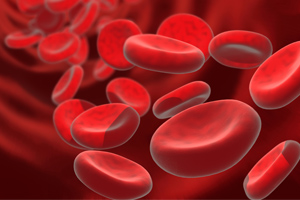








 Folic acid is synthesized from folate (also called vitamin B9 or folacin), which plays a crucial role in a number of body functions, particularly in the proper development of the fetus from the first days of conception.
Folic acid is synthesized from folate (also called vitamin B9 or folacin), which plays a crucial role in a number of body functions, particularly in the proper development of the fetus from the first days of conception.
Physicians advise that all women of childbearing age take a regular folic acid supplement since 50% of pregnancies are unplanned, and as the neural tube, from which the infant’s nervous system will develop, is one of the first things to develop in a fetus. Often, by the time a woman realizes she is pregnant, much of that important development is already done. Women who are deficient in folate risk giving birth to infants who are low in birth weight or due to neural tube defects have a spinal malformation, such as spina bifida, or other neurological disorders.
Folic acid is so important that it is one of the vitamins that the FDA requires be added to fortified foods such as bread, flour, breakfast cereals, pasta and rice. Since this requirement was enacted in 1998, the rate of neural tube defects has decreased 26%.
Folate is also crucial to proper cell growth. DNA and RNA, the building blocks of all our cells, rely on folate to develop properly, and folate has been found to help prevent the changes in DNA that can lead to the development of cancerous cells. It also aids in the healthy formation of red blood cells, which is necessary in order to avoid anemia.
Folate helps keep homocysteine levels in the blood low, reducing your risk of cardiovascular disease, aids in the proper functioning of your nerves through the synthesis of neurotransmitters, and helps prevent dementia, Alzheimer’s disease and osteoporosis-related bone fractures.
Signs of folate deficiency include: insomnia, depression, irritability, muscle fatigue, sore tongue, diarrhea, gingivitis and mental fuzziness.
Some good natural sources of folate include: green leafy vegetables such as spinach and collard greens; beans and legumes such as lentils and peas; and fruit and fruit juices, particularly tomato juice and orange juice. Liver is also an excellent source, and cooking it does not easily destroy its folate, which can be the case when cooking vegetables. To maintain the greatest amount of folate in your vegetables, either eat them raw or cook them for as short a time as possible.
The Centers for Disease Control and Prevention advise that adults get 400 mcg of folic acid every day, either through their diet or by taking a dietary supplement. If pregnant, that amount should be raised to 600 mcg daily, and 500 mcg every day for women who are breastfeeding.
 Obesity and the diseases associated with it cost a staggering percentage of health care dollars. It is estimated that $168 billion is spent each year in the U.S. alone to treat obesity-related diseases. These diseases include Type 2 diabetes, heart disease, cancer, high blood pressure, metabolic syndrome, polycystic ovary syndrome (PCOS), high cholesterol, gallstones, osteoarthritis and more.
Obesity and the diseases associated with it cost a staggering percentage of health care dollars. It is estimated that $168 billion is spent each year in the U.S. alone to treat obesity-related diseases. These diseases include Type 2 diabetes, heart disease, cancer, high blood pressure, metabolic syndrome, polycystic ovary syndrome (PCOS), high cholesterol, gallstones, osteoarthritis and more.
The increased risks of these six diseases alone are good reasons to lose weight if you are obese. Even losing a little has been shown to have a positive effect on your health, and it can significantly reduce the amount you spend on health care every year.
 We seem to hear different things from the medical community every few years about either the positive or negative effect that coffee has on our health. So what is the most current information? Is coffee good or bad for your health? The answer, in short, is that it’s a little of both.
We seem to hear different things from the medical community every few years about either the positive or negative effect that coffee has on our health. So what is the most current information? Is coffee good or bad for your health? The answer, in short, is that it’s a little of both.
Too much coffee can lead to a temporary increase in blood pressure, anxiety and upset stomach, in addition to its ability to become addictive. And don’t forget that added cream and sugar contribute to weight gain. For example, a 24-ounce Starbucks venti double chocolate chip frappucino contains a mind-boggling 520 calories!
Despite these drawbacks, moderate coffee consumption can actually have a protective effect, helping to reduce your risk of many problems, including Parkinson’s disease, Alzheimer’s disease, liver cancer, gallstones and Type 2 diabetes, to name a few. It can also lower the risk of stroke in women.
Current research has indicated that there is no increased risk of heart disease or cancer from moderate coffee drinking. The studies done earlier that reached that conclusion were flawed in that they did not take into consideration other lifestyle habits that went along with increased coffee drinking, such as smoking and lack of exercise, two major causes of these diseases. In fact, coffee has been shown to protect against many kinds of cancer.
A recent study published in the journal Cancer Epidemiology, Biomarkers & Prevention found that there was a 25 percent reduction in cases of endometrial cancer in women who drank four or more cups of coffee per day. Scientists believe this may be due to the fact that coffee has the ability to lower concentrations of free estradiol and insulin, in addition to the cancer-fighting effect of coffee’s antioxidant phenols.
Even a few cups of coffee every day can cut men’s risk of developing prostate cancer by 30 percent, with those consuming six cups of coffee a day reducing their risk of a dangerous form of the cancer by a whopping 60 percent.
Coffee also reduces your risk of developing basal cell carcinoma by up to 20 percent, according to scientists from Brigham and Women’s Hospital and Harvard Medical School.
Another study published in the Archives of Internal Medicine found that women who drink coffee (four cups per day) have a 20 percent lower risk of depression than those who drink no coffee at all.
It is recommended that you get no more than 500-600 mg of caffeine intake per day, the equivalent of about 6 to 8 cups of brewed coffee. Obviously, the amount of caffeine in a cup of espresso will be more than that in the equivalent amount drip coffee.
The key point to keep in mind is to consume coffee in moderate amounts, especially if you are pregnant. But all in all, the benefits of coffee consumption far outweigh the risks for most people, so grab a caf
 With frequent news coverage of late, C-Reactive protein is a term that has been bandied about in the media – but what is it exactly? Produced in the liver, C-Reactive protein, or CRP, is a protein that is released into the bloodstream as a response to inflammation in the body. High levels of CRP are a cause for alarm, since its presence can be linked to inflammation possibly arising from infection, lupus, tuberculosis, heart attack risk, burns and even cancer.
With frequent news coverage of late, C-Reactive protein is a term that has been bandied about in the media – but what is it exactly? Produced in the liver, C-Reactive protein, or CRP, is a protein that is released into the bloodstream as a response to inflammation in the body. High levels of CRP are a cause for alarm, since its presence can be linked to inflammation possibly arising from infection, lupus, tuberculosis, heart attack risk, burns and even cancer.
CRP is believed to play a significant role in the body’s early defense mechanism against infections, where its physiological role is to bind with a compound present on the surface of dead and dying cells, and even some bacteria, known as phosphocholine. It then activates the complement system, a part of the immune system called the “innate immune system,” via the C1Q complex.
The usefulness of the C-reactive protein is its ability to determine the progress of a disease, and it can also be used to assess whether a treatment for diseases associated with inflammation are working or not. In order to measure the levels of CRP in the blood, first a blood sample from the patient must be collected and analyzed. The levels of CRP in healthy individuals are negligible and will not show up in the test. For sufferers of diseases associated with inflammation, the test will show various levels of CRP in the blood. The measurement of CRP in the bloodstream not only can also help to determine whether someone is at risk of heart disease, but also assesses the severity of the risk.
Studies have found that patients who have raised basal levels of C-Reactive proteins are at an increased risk from diabetes, hypertension and cardiovascular diseases. There is also a strong correlation between the lipid responses to low fat and high-polyunsaturated fat diets and CRP levels.
Some organs in the body are at an increased risk from cancer when they become chronically inflamed, and such inflammation may be highlighted by the presence of CRP in the body. In one study samples were collected from sufferers of colon cancer and a control group, the average levels of CRP in those with colon cancer measured 2.69mg/l, whereas those in the control group had a mean value of 1.97mg/l. With significant difference between the two groups, this supports previous studies that connect the intake of anti-inflammatory medication with the lowering of colon cancer risks.
While the measurement of CRP cannot pinpoint the exact location of the inflammation in the body, it can be used to monitor and detect the presence of diseases associated with inflammation, and can monitor whether medication is effective on inflammatory diseases being treated.